Words Amicia de Moubray Photographs Martin Elliott, Amicia de Moubray
‘I don’t have any fear as an artist and am prepared to take on any medium,’ says Faversham artist Sonia McNally. She was undaunted by being commissioned to work with etched glass for the first time, making a 12 metre long installation of panels for St Alphege’s church in Whitstable High Street.
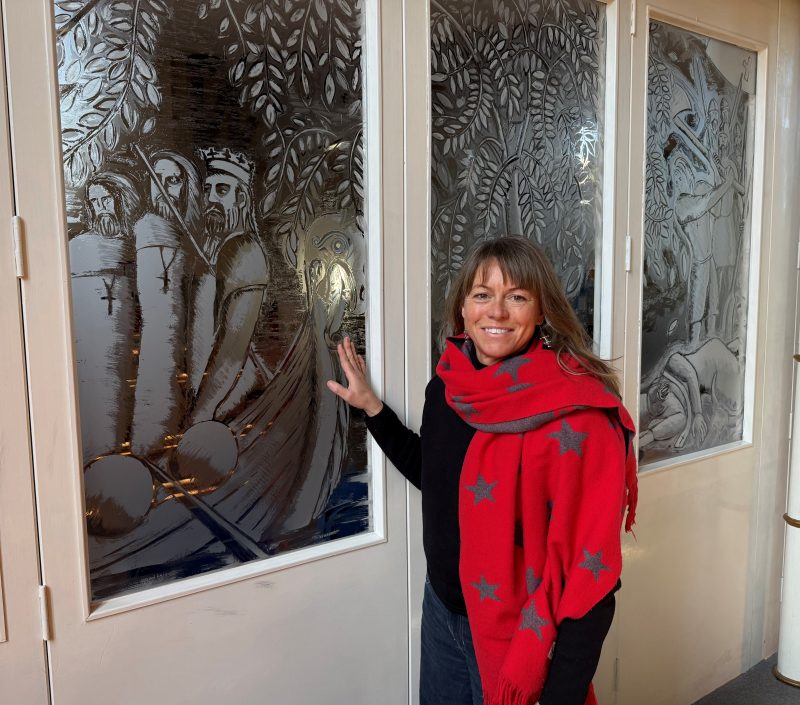
The twelve large panels (each panel measures 70cm x 140cm) tell the story of St Alphege and, set into a screen, run across the interior of the church. They are an arresting sight and deserve to be better much known as few people work on such a large scale with decorative glass.

Twelve etched glass panels by Faversham artist, Sonia Mcnally tell the story of the martyrdom of St Alphege in St Alphege Church, Whitstable
 Sonia decided to use etched glass, explaining: ‘It’s an excellent vehicle for telling a spiritual story. Ethereal by nature, it is further enhanced by the way the light continually changes as it moves across the panels throughout the day.’
Sonia decided to use etched glass, explaining: ‘It’s an excellent vehicle for telling a spiritual story. Ethereal by nature, it is further enhanced by the way the light continually changes as it moves across the panels throughout the day.’
Technically it is a complex process working in reverse. Sonia says: ‘It was hard to get the right balance of clear and etched glass working together.’ She would get up at 4.30 am every day to drive to Brixton Glass Studio. ‘They were absolutely fantastic’.
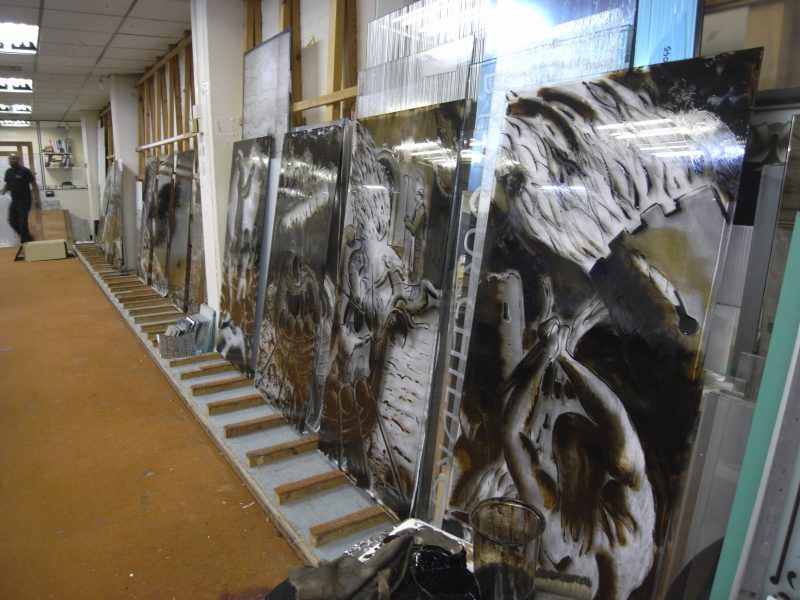
The panels at Brixton Glass Studios
It was imaginative of the Reverend Rachel Webbley of St Alphege to commission the work to celebrate the millennium of St Alphege’s martyrdom on the 19 of April 1012. ‘Our church had never done anything like this before. We had to start by gaining everyone’s trust.’ The Friends of St Alphege raised the cost of £20,000 from an assortment of local businesses, a sponsored cycle ride, run or walk to Canterbury Cathedral, as well as numerous other fund-raising activities and generous individual donations. Sonia set up a ‘fun run’ to raise money which the church kept going for 10 years. She even enlisted a couple of her fellow runners, a father and son, to model for the panels. ‘Running alongside them, I thought they looked a bit Vikingesque. Over coffee I persuaded them. They were keen to be in it.’
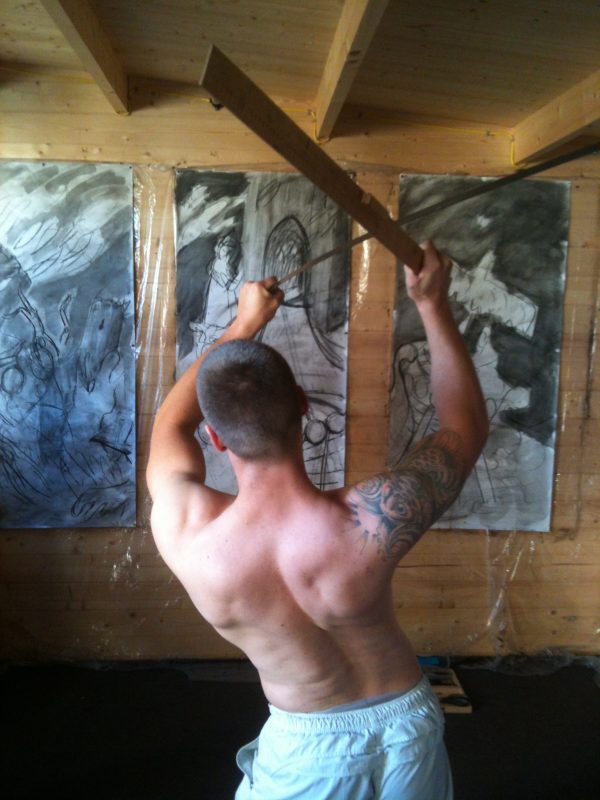
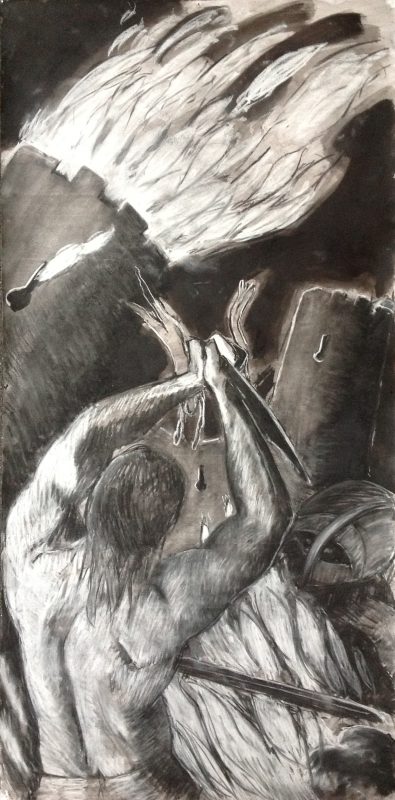
Sonia persuaded a fellow runner to pose as St Alphege
The church is clearly held dear by the people of Whitstable. ‘”#Heart of the town” is the handle I use on all social media,’ says Rachel. The church is manned by volunteers every Friday and Saturday from 2-4 for anyone to come and light a candle. The services are well attended.
St Alphege was an Anglo-Saxon Bishop of Winchester; later Archbishop of Canterbury. He became an anchorite before being elected Abbot of Bath Abbey. He was revered for his extreme piety and kindness. By 1011 AD, the Vikings had conquered much of Southern England. They rampaged through Canterbury, burning the cathedral, but Alphege refused to flee to save himself. He was captured and taken to Blackheath by boat where he was shackled, beaten and starved.
Saintly Alphege offered the Vikings forgiveness blessing their bread. The story is that those who ate the bread were delivered from the plague, but alas the Devil appeared to Alphege in the guise of an angel and convinced him that God wanted him to escape. He led him from his cell to freedom on the marshes before vanishing. Alphege realised what had happened, and allowed a good angel to return him to his cell. The dastardly Vikings continued to torment him. St Dunstan appeared to him and his cell was filled with sweet aromas reminding Alphege of the heavenly life to come once his tribulations were over. Some Vikings converted on the spot, whilst others reported what they had seen to their leaders. Fearing a mass conversion, poor Alphege met his death with a blow from an axe.
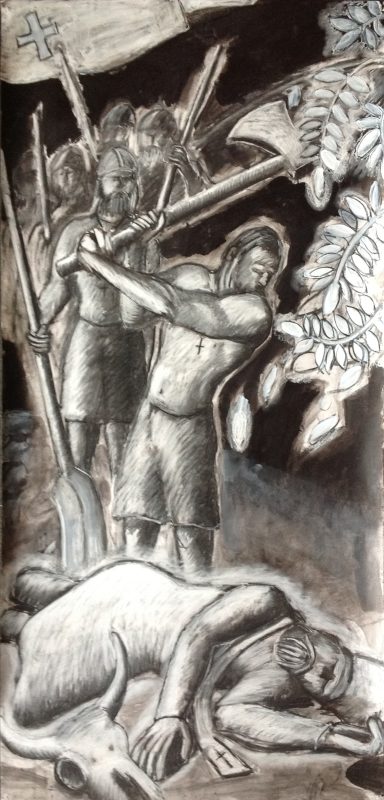
St Alphege being beaten to death
This provoked great consternation as the question arose as to what to do with his body since some of the Vikings had converted. Their solution was to take an oar made from an ash tree and dip it in his blood, then plant it. By the very next day, a tree had grown, and it became a site associated with healing. Alphege’s persecutors, shocked by this, converted to Christianity and Alphege’s body was deemed holy and taken to St Paul’s cathedral.
At the outset of the project, Sonia worked with children at the St Alphege Church of England infant school adjacent to the church, running workshops so that the school could have its very own St Alphege window.
Sonia worked to scale from small to life size cartoons in charcoal and white chalk beginning with rough sketches. ‘I reduced them to a “grey scale” of etched glass tones during the many acid dips creating form and depth to the overall design.’ The method is to start with clear glass, then dip it into acid to make it turn white. Then the design is built up with bitumen paint, blocking out areas of clear or previously etched glass. Sonia says: ‘I didn’t want to have any problems translating my drawings onto the glass. I am very meticulous about details.’ The story reads from left to right with a pleasingly elegant continuity and subtle cohesion. There are shades of both Stanley Spencer and Edward Ardizzone.
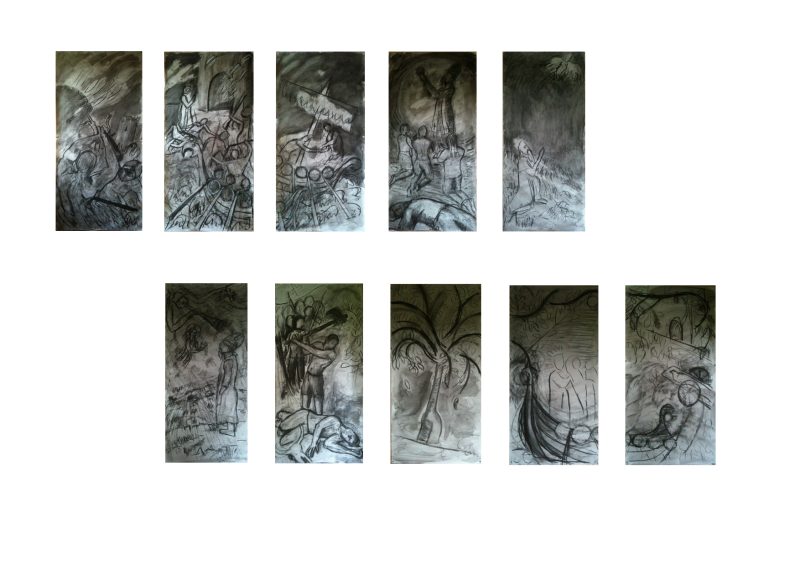
The drawings for the panels
‘I always work with a narrative rather like key scenes from an animation, reading it as if it were a film script.’ The ash tree linking the last three panels is particularly effective.


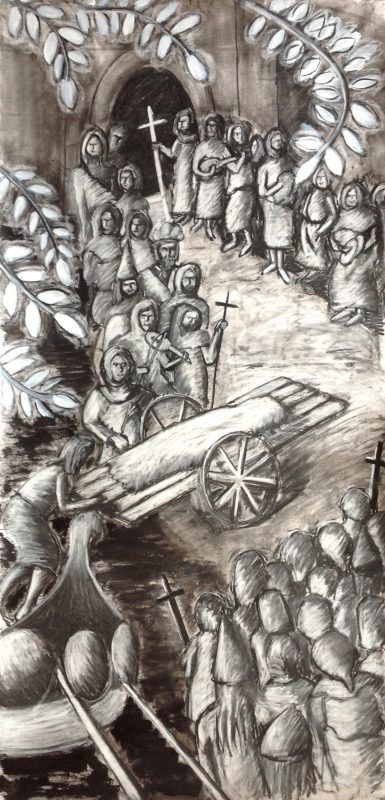
The ash tree links the last four panels together
Sonia has a passion for the spiritual, religions and Christian iconography’. Canterbury Cathedral has been a source of inspiration for her for over two decades, the medieval stained glass being particularly enthralling. ‘I love the lyrical way you are led around the image to reveal the story.’ Whilst thinking about her design, she set up a drawing course at the cathedral. ‘This all influenced my work.’
This commission has been instrumental in recreating the cult of St Alphege. It is one of Sonia’s most notable achievements as an artist.
Next time you find yourself in Whitstable I recommend a visit to St Alphege.
Text: Amicia de Moubray. Photographs: Martin Elliott